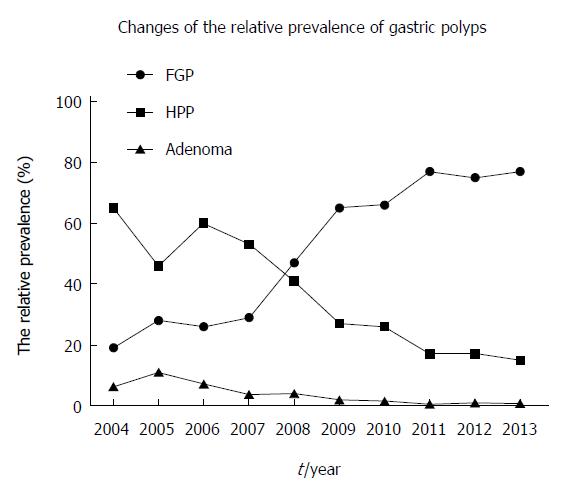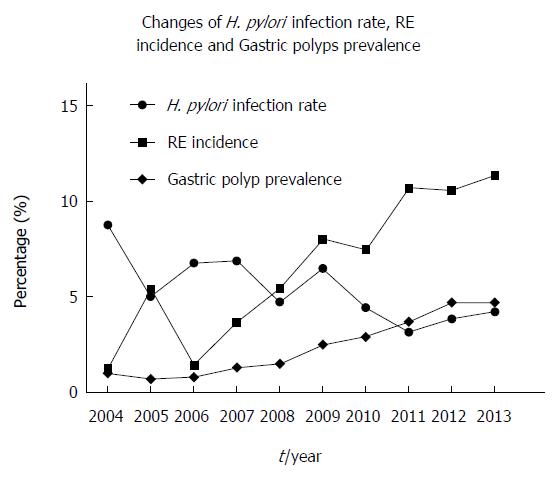Copyright
©The Author(s) 2015.
World J Gastroenterol. Sep 7, 2015; 21(33): 9758-9764
Published online Sep 7, 2015. doi: 10.3748/wjg.v21.i33.9758
Published online Sep 7, 2015. doi: 10.3748/wjg.v21.i33.9758
Figure 1 Changes in the relative prevalence of gastric polyps.
The relative prevalence of FGPs increased with a decrease in HPPs, and no significant change in the prevalence of adenoma in the past ten years. FGP: Fundic gland polyp; HPP: Hyperplastic polyp.
Figure 2 Changes in Helicobacter pylori infection rate, reflux esophagitis (RE) incidence and gastric polyp prevalence.
There was a gradual increase in the prevalence of gastric polyps from 2004 (1.0%, 80/8025) to 2013 (4.7%, 828/17787), with an increased incidence of reflux esophagitis and a decrease in Helicobacter pylori infection rate in the overall patient population. RE: Reflux esophagitis.
Figure 3 Regional distribution of gastric polyps in the past ten years.
There was a progressive shift toward the corpus in the regional distribution of gastric polyps over the past 10 years. The detection rate of gastric polyps located in the corpus increased from 45% (36/80) to 64.25% (532/828), and polyps in the antrum, pylorus and angle deceased from 37.5% (30/80) to 9.30% (77/828).
- Citation: Fan NN, Yang J, Sun G, Lu ZS, Ling Hu EQ, Wang XD, Yang YS. Changes in the spectrum of gastric polyps in the Chinese population. World J Gastroenterol 2015; 21(33): 9758-9764
- URL: https://www.wjgnet.com/1007-9327/full/v21/i33/9758.htm
- DOI: https://dx.doi.org/10.3748/wjg.v21.i33.9758











